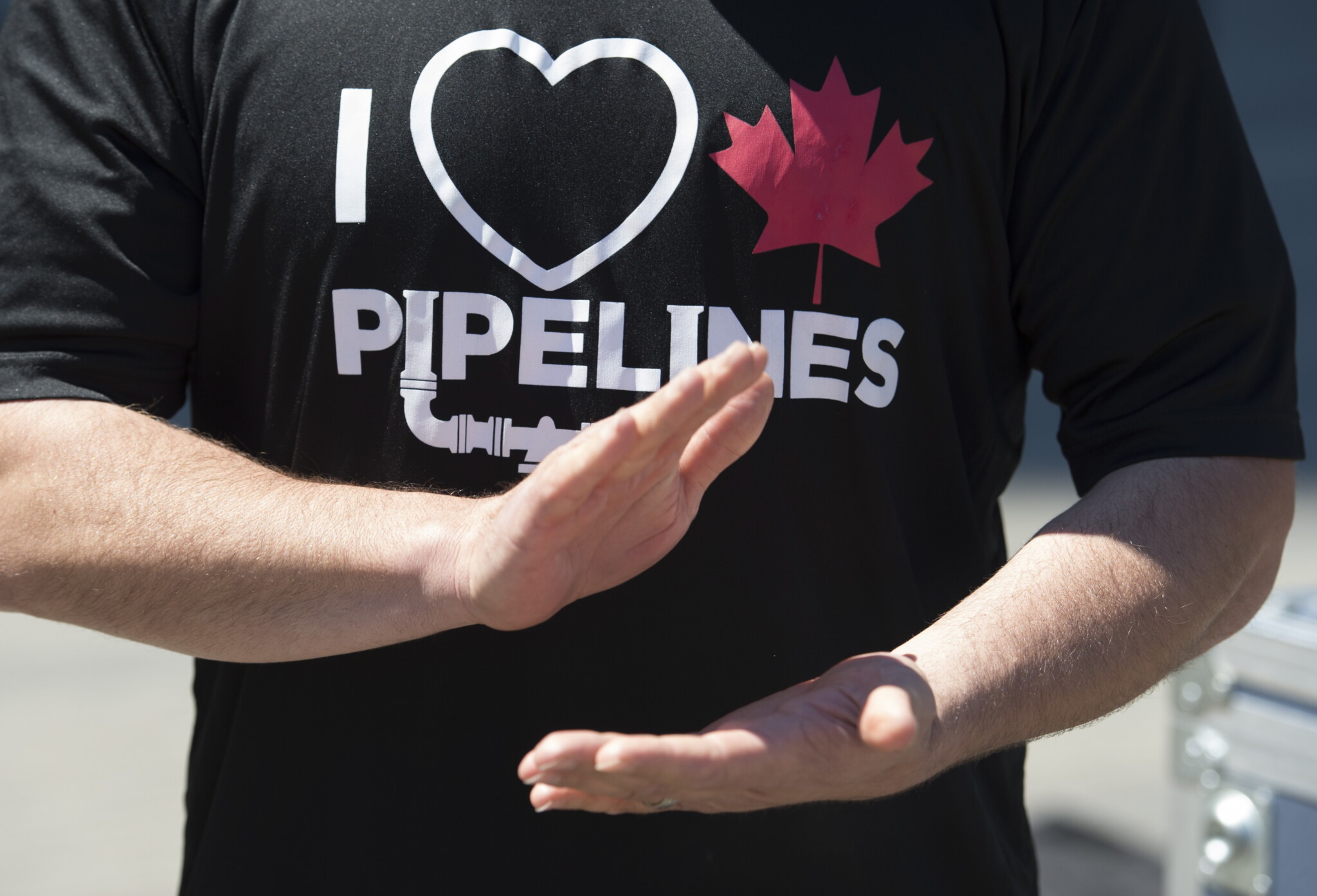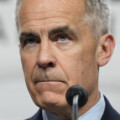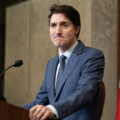Last week’s English-language debate featured an entire section devoted to pipelines. The leaders of the four main political parties were asked where they stand on building them. Their answers were easy to interpret. Poilievre gave a clear and confident “yes,” while Monsieur Blanchet delivered an equally firm “no.” Singh deflected to electricity grids– effectively a “no” on pipelines, too. Prime Minister Carney was a “yes,” but with the caveat that any project must serve the “national interest”—a phrase which is very much open to interpretation.
Our leadership candidates reflect a wide spectrum of views across Canada. The result? There is no clear national consensus on building pipelines across our country. What’s needed? A stake in the outcome. For pipelines to be built, Canadians need to feel like they’re not simply bystanders—they need to feel like they own a piece of it.
What’s in it for me?
We can already pinpoint a big part of the problem: The moment an energy project starts creeping toward someone’s backyard—not just pipelines, but also power lines, wind farms, or nuclear plants—the NIMBY alarm blares. It doesn’t even need to be next door. Sometimes just hearing the word “pipeline” is enough to trigger resistance, even if it’s being built thousands of kilometres away. Whether it’s a visual eyesore or a philosophical “mindsore,” the reaction is often the same: “No thanks.”
Rewind to Friday, March 28, 1952. Shovels had just hit the ground on the $82 million Trans Mountain pipeline. The front page of The British Columbian featured a photo of Mr. Agnar Falt receiving a cheque. Money talks—the smiling Mr. Falt had just “struck oil,” getting compensated for letting the Trans Mountain oil pipeline cut across his 60-acre property in what is now Coquitlam, B.C. The tone of the piece was celebratory, not just for Falt, but on behalf of his community. Falt’s good fortune and the pipeline project were seen as things Canadians could rally around.

Compare that to the headlines of the past 20 years, where pipelines have landed somewhere between political scandals and serial killers in the bad-news hierarchy. Part of the reason is that Canadians don’t feel any sense of ownership. The corny but accurate acronym WIIFM—“What’s in it for me?”—sums it up. For most, the answer is: “Not much.”
Fast forward from 1952 to 1979, and building pipelines had already become far more complicated than cutting cheques to landowners. Author François Bregha’s Bob Blair’s Pipeline dug into the tangled mix of business ambition and government policy behind the Alaska Highway natural gas pipeline.
Bob Blair—then the charismatic CEO of Foothills Pipelines Ltd.—offered a prescient take:
“Pipelines do great things for the place they go to…, and something for the places they come from, but they are of strictly limited benefit to the places they go through.”
Ensuring safety and compensating communities along a route is the visible, and often necessary, thing to do. But if you’re not on the route, there’s NIIFY: “Nothing in it for you.” Worse still, if you happen to live just next door to someone like Falt, all you’re left with is envy—if not outright animosity.
Blair’s assessment gets to the heart of the issue. Downstream, there are clear, value-added benefits in the places where oil products are refined, sold, and used to drive the economy. Upstream, oil and gas producers create employment and generate billions in royalties and taxes. But in between? Not much.
In recent years, there have been meaningful steps toward ensuring First Nations receive economic benefits when pipelines cross their lands—long overdue. But carving out narrow deals along specific routes doesn’t do much for the rest of the Canadian public, who are still left with the WIIFM mindset.
And as impressive as it is that upstream producers are expected to pay about $27 billion in royalties and taxes in 2025, that figure doesn’t exactly stir hearts—or open minds—when it feels abstract and disconnected from the lives of Canadians.
Talking about productivity and GDP creates blank looks, too. How many average Canadians even know what GDP is, let alone can recite the formula for calculating it?It’s C + I + G + (X – M) if you are wondering.
These days, very little resonates unless it hits the personal pocketbook. Falt’s payment back in 1952 was direct and tangible. He felt it. His community felt it. So how can Canadians today feel like they own a piece of our economy?
Sure, they can buy stocks in oil and gas producers and pipeline companies—but equities are volatile, and not everyone wants to ride that rollercoaster.
But what about retail debt for infrastructure? Receiving interest payments on corporate debt is far more secure and stable.
Bring back retail bonds
A quick look at the availability of Canadian corporate debt at a retail level shows a smorgasbord of about 100 bonds. Most are issued by banks, telecommunications, and real estate companies. By my count, there’s one pipeline and a few midstream bonds that can be bought on the secondary market. It’s a paltry selection, and the minimum size is $5,000, which shuts out a lot of potential buyers.
Upstream, midstream, and downstream companies should consider issuing retail bonds in smaller denominations. And not just pipelines and LNG facilities—a buildout of infrastructure applies to ports, power lines, solar farms, and even nuclear power plants.
Issuance of more retail debt can and should include federal and provincial Crown corporations too. Most of the electrical infrastructure in this country is owned by the people. So too is the Trans Mountain pipeline. But do we really feel like we have the option to participate directly? If national building is the plan, then offer up the return potential to the nation’s people.
The more Canadians see the benefits show up in their savings accounts, the more they’ll start to see the answer to WIIFM for themselves.
Retail bonds were a bigger deal back in the 1990s, before they fell out of favour. Why? The issuing costs became too high, thanks in part to heavy regulatory and reporting burdens. Writing a prospectus for retail investors became more effort than it was worth. It’s a reminder that the impact of dense policy and regulation of all sorts is not just a deterrent to corporate investment—financial regulations can wall off average Canadians from investing in their own economy, too.
Making it easy to invest in Canada
Here’s a challenge for securities commissions and policymakers alike: make it easier again for everyday people to own Canadian enterprise. “Buy Canadian” shouldn’t just mean maple syrup and lumber—it should include better access to feeling like we’re building the economy together.
We’ve done this before. In the 1800s, when the Canadian Pacific Railway was under construction, citizens were actively encouraged to buy bonds and help “build the country.” The CPR was marketed as a patriotic project—and a sound investment. That framing worked. It rallied capital and public support simultaneously. Today, we must borrow that same spirit.
And it’s not just companies that should be finding ways to make people feel like they’re part of the effort. Governments—federal, provincial, and municipal, as well as Crown corporations—used to issue retail bonds routinely. Why not make them commonplace again?
In the wake of the U.S. trade war and supply chain shakeups, Canadians are showing more openness to building energy infrastructure—including oil and gas. But there’s still a lingering assumption that the financial burden must fall entirely on the taxpayer. Unless I missed something, none of the candidates on the debate stage last week talked about who should pay for new infrastructure. That mindset needs to shift. If we want more infrastructure, we need to lay the groundwork for attracting a lot more broad-based, private investment.
Political leaders should be debating how to welcome investment—foreign and domestic, institutional and retail. On the retail side, when those bonds are made available, I’ll be first in line. Because I want to invest—not just in returns, but in the next chapter of this great country.









